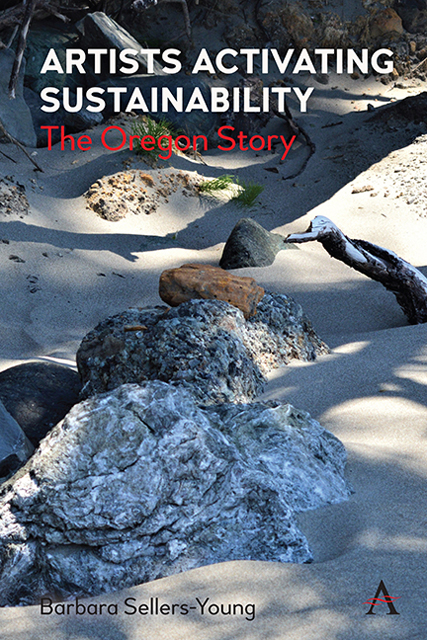Book contents
- Frontmatter
- Dedication
- Contents
- Acknowledgments
- List of Figures
- Introduction: Art, Environment and Metaphor
- 1 Environmental Activism, Arts and the Land of Eden Landscape One: High Desert Basin and Range
- Landscape One High Desert Basin and Range
- Landscape Two Columbia Gorge and Plateau
- Landscape Three Cascade Range
- Landscape Four The Willamette Valley
- Landscape Five Rogue River Valley
- Landscape Six Oregon Coast and Coast Range
- Index
Landscape Six - Oregon Coast and Coast Range
Published online by Cambridge University Press: 10 January 2023
- Frontmatter
- Dedication
- Contents
- Acknowledgments
- List of Figures
- Introduction: Art, Environment and Metaphor
- 1 Environmental Activism, Arts and the Land of Eden Landscape One: High Desert Basin and Range
- Landscape One High Desert Basin and Range
- Landscape Two Columbia Gorge and Plateau
- Landscape Three Cascade Range
- Landscape Four The Willamette Valley
- Landscape Five Rogue River Valley
- Landscape Six Oregon Coast and Coast Range
- Index
Summary
Landscape
The 362 miles of the Oregon Coast and Coast Range are the most recent additions to Oregon's landmass. Approximately 60 million years ago, an exotic terrane, referred to as the Siletz Terrane, moved by action of plate movement and subduction crashed into Oregon's landmass to create the foundation of the Coast Range. Over millions of years, volcanoes related to the terrane erupted and eroded. Over time, some sediments from the ocean were compressed into thick stacks of sedimentary rocks. Today, many of the older rocks remain beneath the water offshore, but uplift, folding and faulting associated with the subduction zone have pushed up others to add to the Coast Range. With the exception of the slower moving Columbia River, the rivers filled will rain from the Pacific coast storms, race down the tree-filled canyons to the ocean carrying sediment into the ocean which piled up off the coast, covering virtually all of the Oregon seafloor and building unique estuaries at the mouth of rivers. On the northern coast, these rivers include the Nehalem, Nescutta, Siletz and the Yaquina. The rivers on the central and south coast are the Siuslaw, Umpqua, Coos and the Rogue.
The coastline is in general relatively straight which has meant it has been pummeled by unimpeded ocean waves and thus is in a constant state of change due to the erosion caused by the impact of tides, high energy waves and associated landslides. The coastal headlands are particularly harsh environments and the evergreen plants that endure are often less than 6 feet tall and display a variety of wind stresses. The result of the erosion of the Coast Range sandstone hills culminate in inlets of sandy beaches and the giant wind-shaped sand dunes and pocket forest that spread along Oregon's central coast.
The Coast Range is covered in tall coniferous forests of Sitka Spruce, Douglas Fir and Western Hemlock. There are also a range of shrubs including Rhododendron, Salmonberry and Wax Myrtle. Coastal forests are filled with different ferns, lichens and mosses. The southern portion of the Oregon Coast is a more mountainous combination of sea cliffs and is heavily forested with Port Orford Cedar, Coast Redwoods, Douglas Fir and Oregon Myrtle.
- Type
- Chapter
- Information
- Artists Activating SustainabilityThe Oregon Story, pp. 185 - 188Publisher: Anthem PressPrint publication year: 2022

